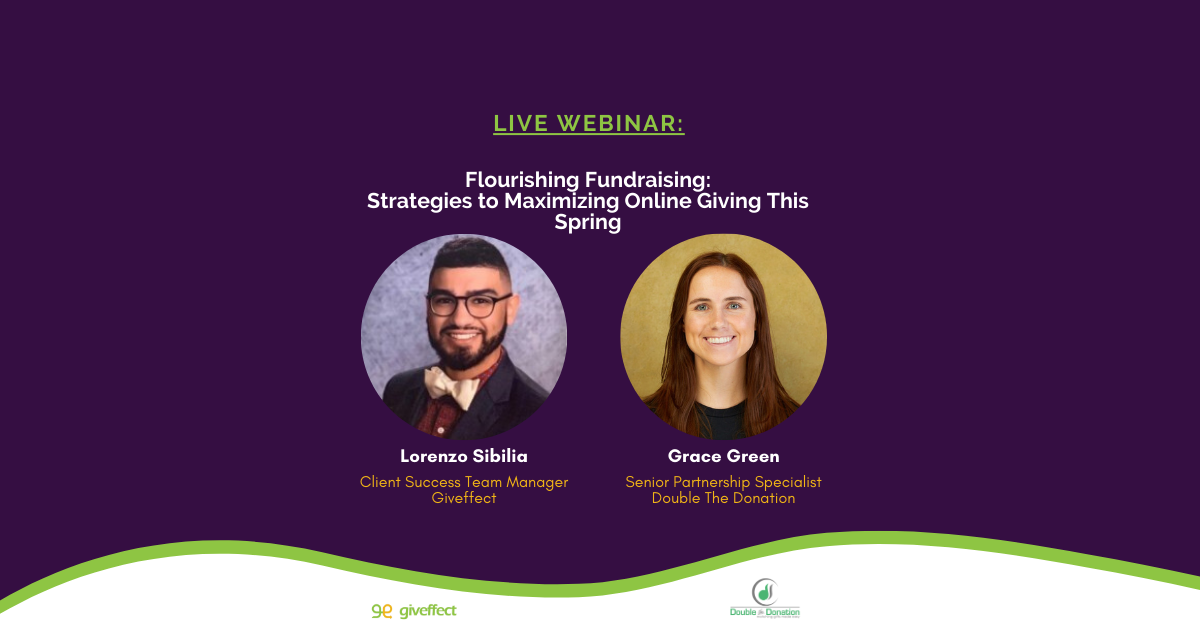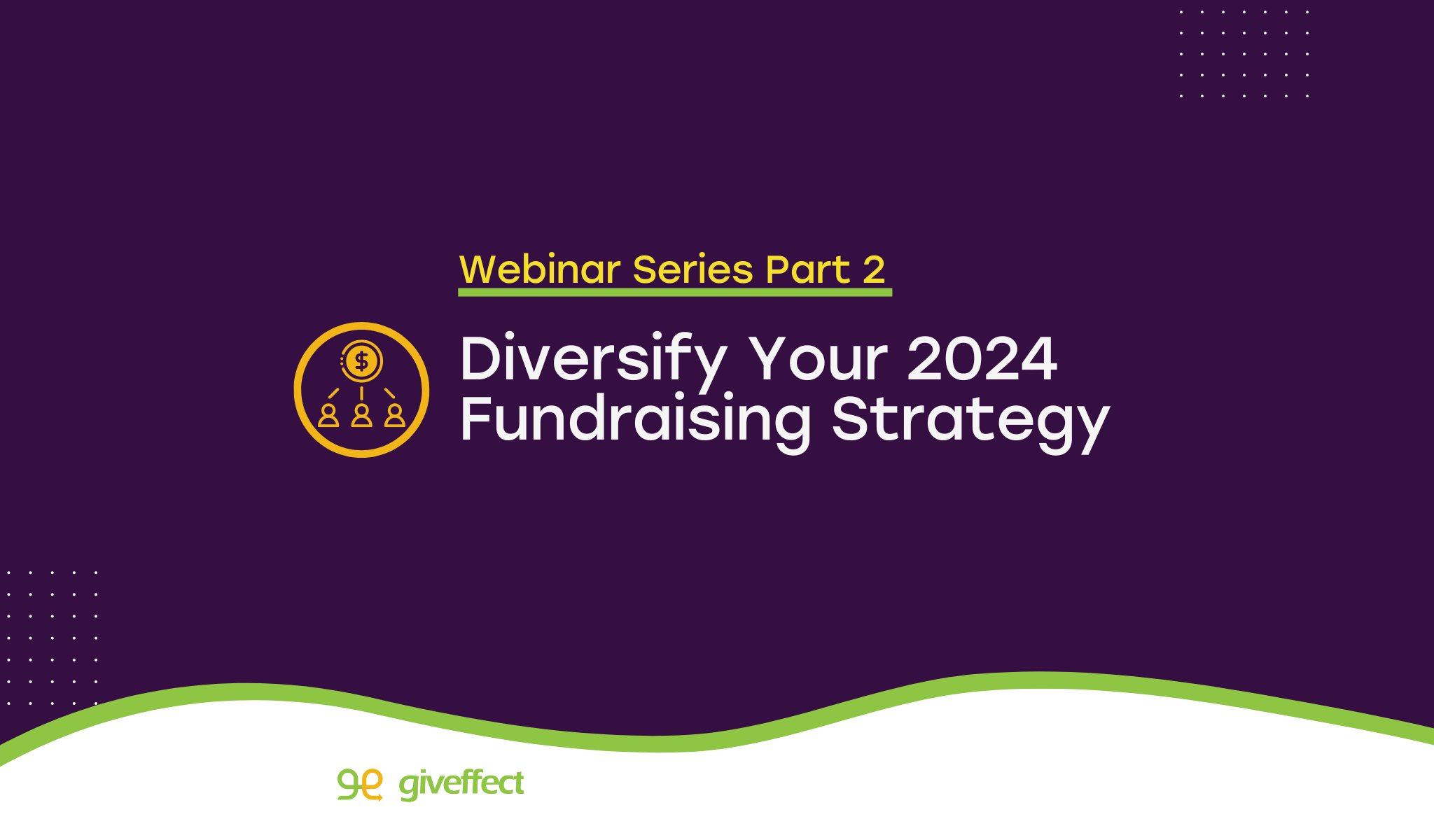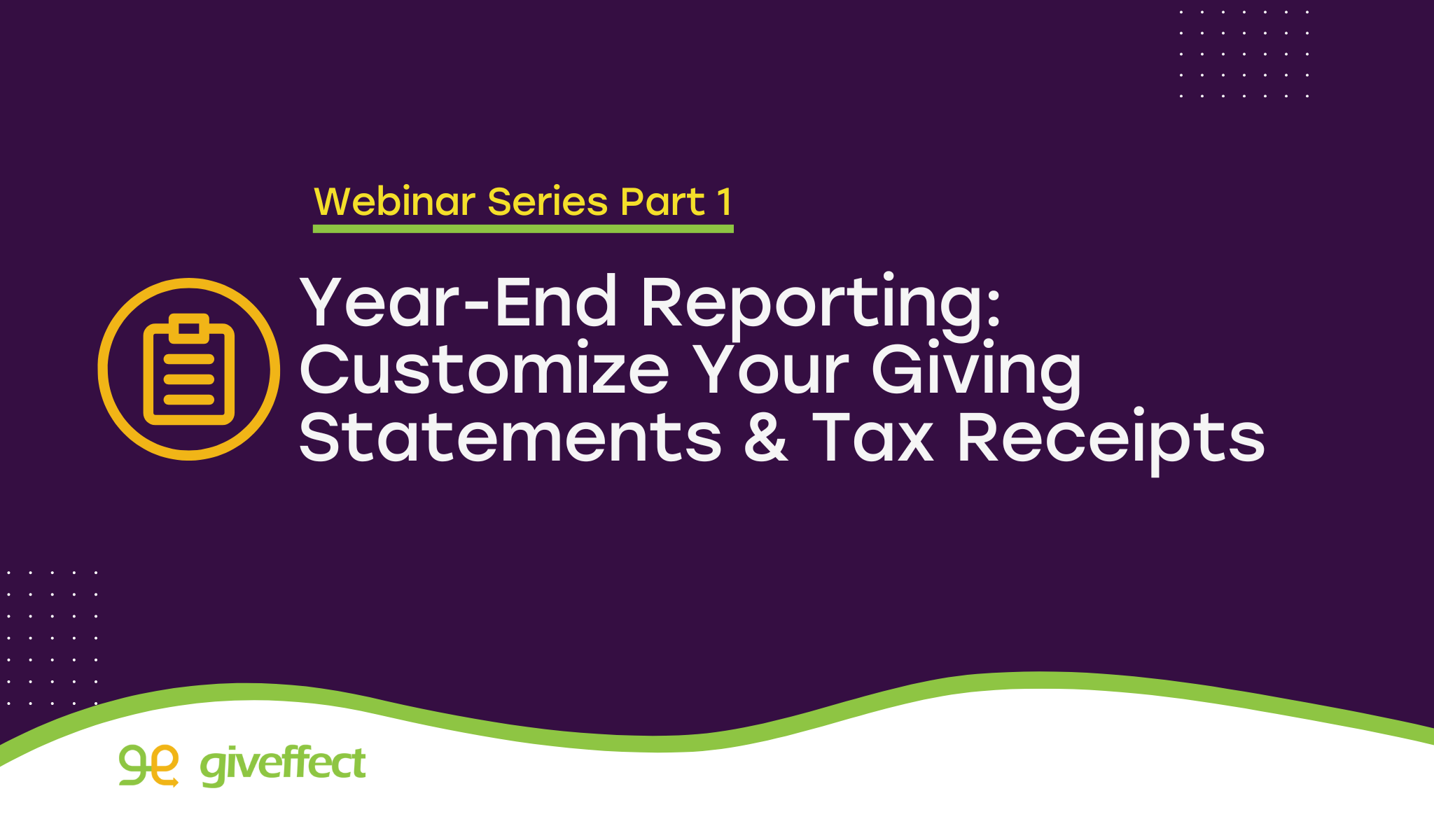The AI revolution is just beginning. While aspects of this cutting-edge technology are quite complex, there are many ways for all of us to utilize its capabilities. For nonprofits specifically, where there is always so much to do and never enough time, AI can help supercharge your fundraising.
Hosted by Heather Mansfield, Editor-in-Chief of Nonprofit Tech for Good, in this webinar, Giveffect’s Director of Marketing & Communications Tara Peitzer and Client Success Team Manager Jack Harrison take a very practical approach to show you how to leverage AI and other emerging technologies to save time and raise more this year-end giving season!
Webinar Summary:
The webinar introduces the transformative power of artificial intelligence (AI) and provides practical insights into how organizations can harness AI to boost their year-end fundraising. Watch the video for more information, examples, and workflows.
Basics of Machine Learning, Predictive Analytics, and Generative AI:
First, let’s dive into the foundational concepts of AI, including machine learning, predictive analytics, and generative AI. AI encompasses various capabilities, including reasoning, problem-solving, perception, and decision-making. Machine Learning/Predictive analytics leverages historical data to forecast future events, while generative AI can produce new content.
Current State of Philanthropy
Due to inflation, in addition to other factors, giving is down according to a recent Giving USA report. Total number of donors is down; however, the average gift size is up.
Given the current environment, we still have opportunities as nonprofit professionals to build fundraising success. One opportunity is the use of new and rapidly evolving technologies for your nonprofit.
5 Practical AI Strategies for Year-End Fundraising Success
1. Segmentation for Personalization:
Segmentation or grouping allows for targeted, personalized outreach, ensuring messages resonate with donors. Segment supporters by demographics such as generation or location, interests such as programs or campaigns, preferences such as giving method, and giving history such as timing or amount. By tailoring communications, nonprofits can elicit more positive responses and foster deeper donor relationships. Automate segmentation to save time and increase accuracy. [Watch the recording to see an example, including step-by-step how to automate segmentation.]
2. Predictive Analytics and Donor Behavior
By examining historical data, AI can forecast giving patterns and even identify potential major donors. Giveffect has a proprietary machine learning and predictive analytics tool, called The Lab, which is built right into the platform and helps you identify who is most likely to give and when. Predictive analytics tools like Giveffect’s can help you identify where to put your time and energy using data. This type of tool is especially helpful leading up to and during year-end giving. when there’s never enough time. [Watch the recording to see an example of how to use a predictive analytics tool for end-of-year fundraising.]
3. Generative AI / Content Creation
Gen AI streamlines the content creation process for all types of writing. Gen AI reduces manual content creation efforts, allowing nonprofits to focus on strategic planning and relationship-building. Think of content created by Gen AI as a first draft, not the final draft.
Platforms such as ChatGPT, Dall-e, Google Bard, Bing Chat, Alpha Code, GitHub Co-pilot, and Adobe Firefly offer unique features tailored to different needs. While some are built specifically for nonprofits, such as Giveffect’s AI Writer, others require expertise in “prompt engineering” to yield the best results. Organizations should weigh the costs and benefits of each tool, considering factors like subscription fees and user-friendliness. [Watch the recording for examples of prompts as well as how AI Writer’s interface guides you through crafting your prompt.]
4. Automating and Personalizing Appeals
Automating and personalizing nonprofit appeals uses technology to streamline the process of reaching out to potential donors while tailoring the messaging to resonate with their individual interests and giving history. This approach increases efficiency by automating repetitive tasks and ensures relevance by crafting messages that reflect donors’ preferences and past interactions (captured in your donor’s profile/segmentation). The result is a more engaging and effective fundraising strategy that connects with supporters on a deeper level. [Watch the recording to see an example of how to automate and personalize appeals at scale.]
5. Donor Engagement and Retention
Even with the most innovative technologies available, giving boils down to relationships. Given the current state of philanthropy, this stresses the importance of donor relations and building meaningful, long-term connections with your donors. Combine the elements we’ve been discussing today to create targeted retention strategies which include items like workflows that help your team become more efficient in sending out these communications or performing other actions that assist you day-to-day. [Watch the recording for examples and workflow using a LYBUNT report (Last Year But Unfortunately Not This) for strategies to engage with donors and increase retention].
Final Thoughts:
Building long-term donor relationships is crucial, extending beyond year-end fundraising. As the fundraising landscape evolves, nonprofits should remain adaptable, leveraging tools like AI to optimize their efforts.
To learn more about how to leverage Giveffect and our AI tools to increase your year-end fundraising, schedule your demo today!


